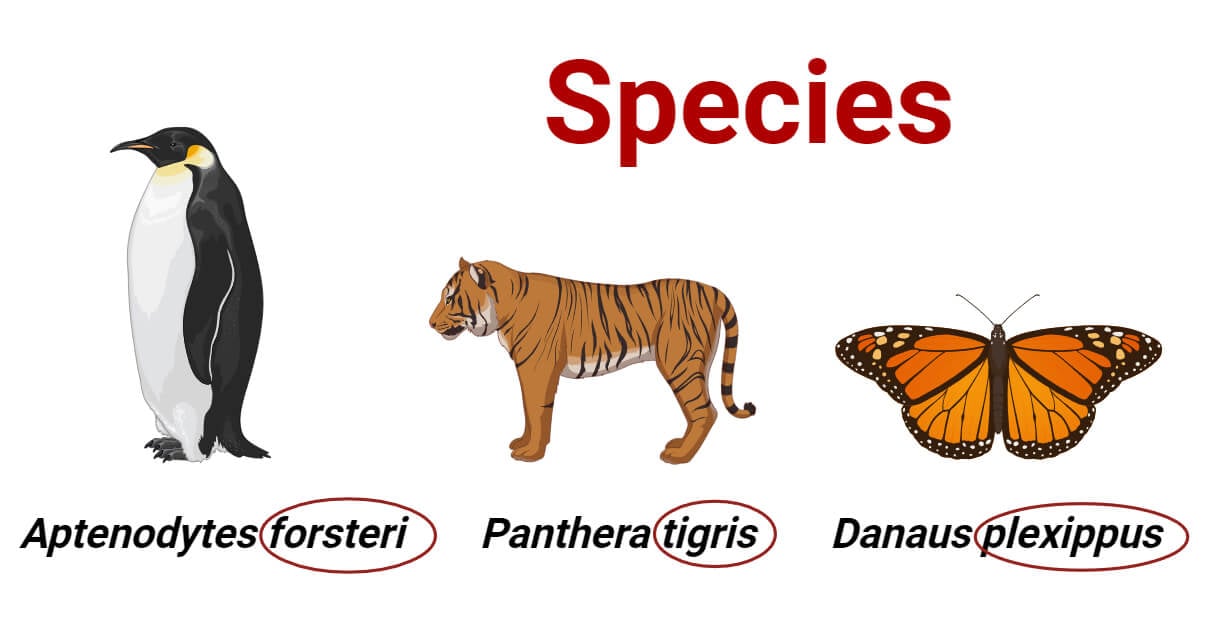Species are widely understood as types or kinds of organisms. For example, humans and dogs are different species. The concept of a species seems straightforward at first: a group of organisms that are similar and can breed with each other. However, defining, identifying, and differentiating between species is a complex task, especially when dealing with previously unknown species.
The concept of classifying species was popularized by Carl Linnaeus, a Swedish biologist, in his 1735 book Systema Naturae. Linnaeus popularized the concept of taxonomy, where organisms are classified into hierarchical categories such as Kingdom, Phylum, Class, Order, Family, Genus, and Species.
Species, in this system, represent the most specific level of classification and are defined based on common characteristics and the ability to interbreed and produce fertile offspring. However, this definition becomes unclear when applied to organisms like bacteria, which reproduce asexually, or to organisms with extensive genetic variation.
Despite its challenges, Linnaean taxonomy remains the foundation for classifying species. However, modern advancements in genetics and evolutionary biology have allowed us to explore new methods for identifying and classifying species.
Interesting Science Videos
What is a Species?
In biology, a species is a fundamental classification unit that includes organisms sharing common characteristics and the ability to interbreed naturally. This concept, known as the biological species concept, is widely accepted and used in various fields of study.
- According to this concept, individuals within a species can mate and produce viable offspring, while being reproductively isolated from other species. This reproductive compatibility is a key characteristic that sets different species apart.
- However, there are more than 20 other different species concepts, each focusing on different aspects of what defines a species.
- For example, the ecological species concept defines a species based on the specific resources and ecological niche they occupy. It focuses on how organisms interact with their environment.
- Additionally, species can also be defined based on their shared evolutionary history. This approach, known as phylogenetics, studies the evolutionary relationships among organisms. Species that share a recent common ancestor are grouped together.
- These different species concepts show the diversity and complexity of life on Earth. Each concept provides a unique view of what defines a species.
Species Classification and Taxonomy
- Taxonomy is a scientific discipline that categorizes organisms based on their biological traits. It provides a systematic framework for organizing the diverse life on Earth into distinct categories based on their evolutionary relationships and shared characteristics.
- Taxonomy categorizes organisms into hierarchical levels, starting from highest to lowest, including Kingdom, Phylum, Class, Order, Family, Genus, and Species.
- Species is the most specific and fundamental unit of classification. Each species is defined by a unique set of characteristics that differentiates it from others within the taxonomy hierarchy.
- Classification of organisms is important to understand the complex life forms and their relationships.
- Knowledge of an organism’s classification can provide information about its features, behaviors, and ecological roles based on shared traits with other classified species.
- Taxonomy is used to identify and study species, helping research in various fields such as ecology, genetics, and evolutionary biology.

Example – Human (Homo sapiens)
- Kingdom: Animalia
- Phylum: Chordata
- Class: Mammalia
- Order: Primates
- Family: Hominidae
- Genus: Homo
- Species: sapiens
Methods of Species Identification
- Morphological Characteristics: The traditional method widely used for species identification was morphological characterization. Traditionally, scientists relied on an organism’s physical traits to identify and classify species. These morphological characteristics include size, shape, color, and other anatomical features.
- DNA analysis and genetic sequencing: DNA analysis and genetic sequencing have revolutionized species identification. Modern techniques like Polymerase Chain Reaction (PCR) amplify specific DNA segments, allowing for precise comparisons and identifications. Genetic sequencing reads the complete genetic code of an organism and provides detailed information about the evolutionary relationships and genetic diversity.
- Phylogenetics: Molecular techniques allow the construction of phylogenetic trees, showing the evolutionary relationships between species based on genetic similarities and differences.
- DNA Barcoding: Another important modern species identification method is DNA barcoding which involves sequencing a short, standardized DNA region to identify species. This method is particularly useful for identifying species where morphological differences are difficult to observe.
Challenges and Controversies
- The concept of what defines a species has been a topic of debate among scientists for a long time.
- Early taxonomists, such as Carl Linnaeus, categorized organisms on the basis of visible traits like fins and feathers. The advent of genetic analysis and a deeper understanding of evolutionary relationships has led to new concepts and methods.
- One traditional definition, proposed by Ernst Mayr, defines a species as a group of organisms capable of interbreeding and producing fertile offspring. However, this definition has limitations, especially in cases where organisms do not reproduce sexually.
- In recent years, scientists have recognized that different methods may be suitable for different organisms. For example, reproductive isolation remains the main criterion for species identification in sexually reproducing organisms.
- However, for asexual organisms or those with limited sexual reproduction, alternative criteria, such as genetic divergence and ecological factors, are used.
- By combining genetic analysis, ecological factors, and evolutionary history, scientists can better understand and identify different species. This approach helps in a more comprehensive and accurate classification of organisms, addressing the challenges presented by both sexual and asexual reproduction.
References
- Aldhebiani, A. Y. (2018). Species concept and speciation. Saudi Journal of Biological Sciences, 25(3), 437-440. https://doi.org/10.1016/j.sjbs.2017.04.013
- Ereshefsky, Marc. “Species”. The Stanford Encyclopedia of Philosophy (Summer 2022 Edition). https://plato.stanford.edu/archives/sum2022/entries/species/
- Hey, J. (2009) Why Should We Care about Species? Nature Education 2(5):2
- Mayr, E. (1996). What Is a Species, and What Is Not? Philosophy of Science, 63(2), 262–277. doi:10.1086/289912
- Species – Speciation, Variation, Adaptation | Britannica
- species | Learn Science at Scitable (nature.com)
- Zachos, F. E. (2016). Species Concepts in Biology. doi:10.1007/978-3-319-44966-1
- Zimmer, C. (2008). What Is a Species? Scientific American. https://www.scientificamerican.com/article/what-is-a-species/
